Art & Design Movements
Flower frogs reached their height of popularity during the first half of the 20th century. Looking at how their design changed over the years, you can see the influence of popular art and design movements.
This page presents a brief description of each of these movements accompanied by photographs of representative flower frogs.
Movements
Art Nouveau – 1890 to 1910
Art Nouveau reflects natural forms with curvaceous, flowing lines such as those found in flowers and full-figured women.

From the collection of Betty Burnsed
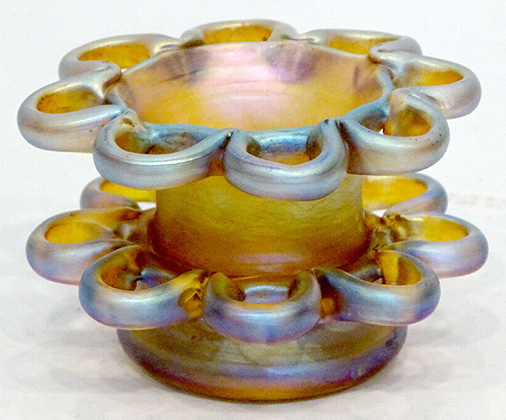
By L. C. Tiffany, photo courtesy pryankee on eBay
Arts and Crafts – 1880 to 1920
The Arts and Crafts movement rejected the decline in standards of materials and construction that had become the norm in factory-produced home furnishings. It represented a return to handwork, skilled craftsmanship, and attention to design. The excessive ornateness of the Victorian era gave way to the value of simplicity, utility, and the inherent beauty of the materials.
Click on Photos to Enlarge




The first two Rookwood flower frogs present simple forms in matte glazes indicative of the movement, while the second two present beautiful designs in semi-gloss and gloss glazes without being ornate.
Art Deco – 1920 to 1940
Art Deco is represented by bold, often machine-like geometric forms, and equally bold colors. And, of course, by the stylized dress of the period.
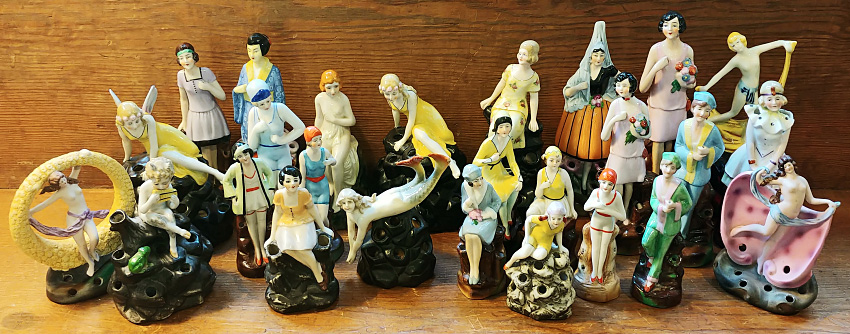
From the collection of Betty Burnsed
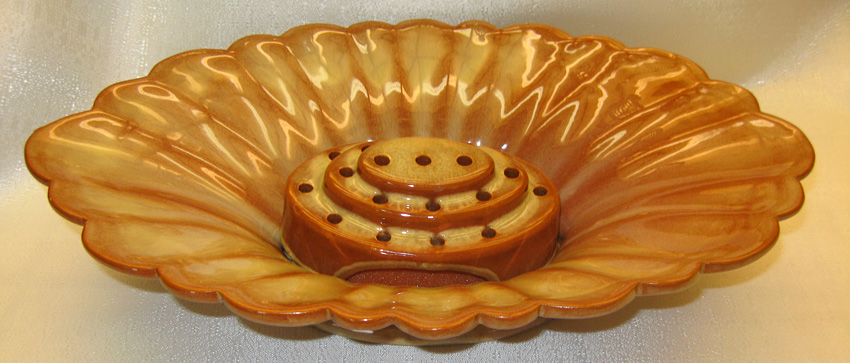
Catalina Island Pottery flower frog 158-A in Monterey Brown in bowl 204 from the collection of Dan & Jane Austin
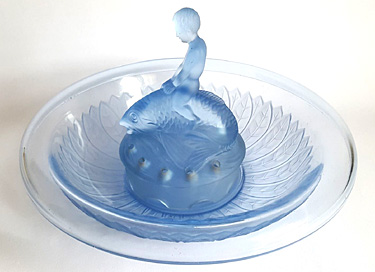
Boy on Fish by Schweig Mueller from the collection of Nigel Stone

Green cloud glass by Davidson from the collection of Kevin Harper

Frankart circa 1920s from the collection of Kevin Harper

Haeger Potteries No. 10 Round (5") in Catseye glaze from the collection of Peter Christensen
Egyptian Revival – 1922
Egyptian Revival first appeared in Europe as an architectural style after Napoleon's conquest of Egypt in 1798, and then in the United States following the translation of the Rosetta Stone in 1822. But the revival of interest seen here came with the discovery of King Tutankhamun's tomb in 1922.
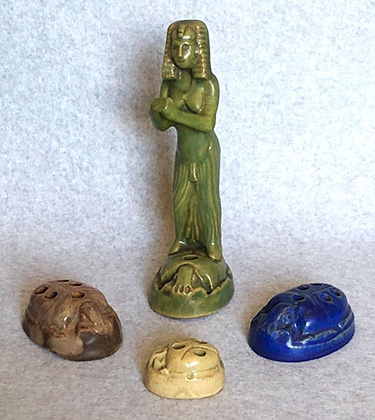
Fulper scarabs and female Egyptian figure from the collection of Kevin Mills
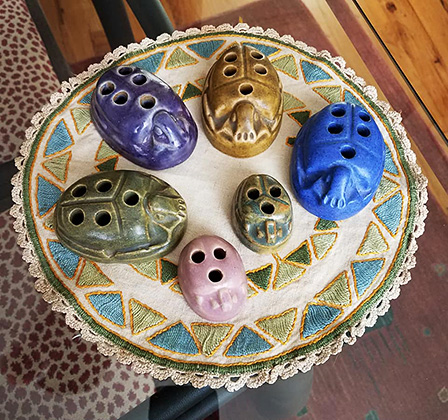
A beautiful assortment of Fulper sizes and colors from the collection of Randy Sherman
Mid-Century Modern – 1945 to 1969
Produced from 1945 to 1969 or thereabouts, Mid-Century Modern is characterized by clean, simple lines, without decorative embellishments.
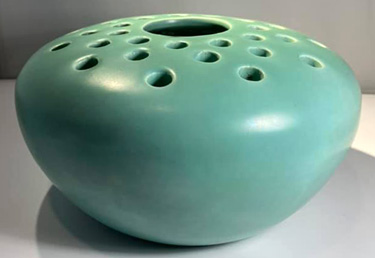
Marked "MADE IN CALIFORNIA," from the collection of Roxanna Groves
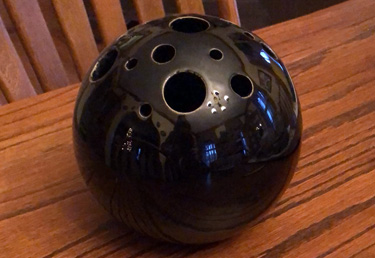
Hyalyn "bowling ball" designed by Michael Lax, from the collection of Kathleen James
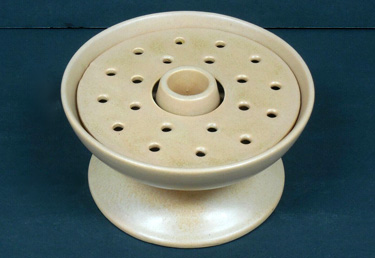
Royal Haeger RG-53 Compote, photo courtesy bluegoose2 on eBay

From the collection of Georgi King

This is not the most glamorous flower frog in my collection, but I include it here because it is listed in Haeger Potteries' 1950 catalog. That's as mid-century as you can get!